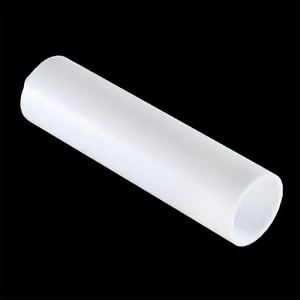When it comes to managing high temperatures in industrial applications, PTFE (Polytetrafluoroethylene) tubes stand out as a reliable solution. These tubes offer exceptional heat resistance, making them an essential component in environments where safety is paramount. In this article, we will delve into the significance of PTFE tubes in ensuring heat safety, exploring their properties, applications, and best practices for use.
PTFE tubes are made from a synthetic fluoropolymer of tetrafluoroethylene. Renowned for their non-stick properties, PTFE tubes are commonly recognized by the brand name Teflon. One of the primary reasons these tubes are valued in industrial settings is their remarkable ability to withstand extreme temperatures.
Properties of PTFE Tubes
PTFE tubes are known for their unique set of properties that make them ideal for high-temperature applications:
- Heat Resistance: PTFE can withstand temperatures ranging from -328°F to +500°F (-200°C to +260°C), making it suitable for a wide range of applications.
- Chemical Resistance: These tubes are resistant to most chemicals, which enhances their durability and longevity in harsh environments.
- Low Friction: The low coefficient of friction ensures smooth operation in dynamic applications.
- Non-Flammable: PTFE is inherently non-flammable, adding an extra layer of safety in heat-intensive environments.
Applicazioni dei tubi in PTFE
PTFE tubes are utilized in various industries due to their heat resistance and durability:
- Aerospace: Used in aircraft components where both heat resistance and lightweight materials are critical.
- Chemical Processing: Ideal for transporting aggressive chemicals at high temperatures.
- Electronics: Used for insulating wires and components that are exposed to high thermal conditions.
- Food Processing: Suitable for high-temperature food applications due to their non-reactive nature.
Importance of Heat Safety
Ensuring heat safety in industrial settings is crucial for preventing accidents and maintaining efficient operations. Heat-resistant tubing, such as PTFE tubes, plays a pivotal role in managing thermal risks.
Risks of Inadequate Heat Management
Failure to manage heat effectively can lead to several risks, including:
- Equipment Damage: Overheating can cause equipment to malfunction or fail.
- Safety Hazards: High temperatures can pose serious safety risks to workers, including burns or exposure to toxic fumes.
- Production Downtime: Equipment failure or necessary repairs can lead to costly production delays.
Benefits of Using PTFE Tubes
By incorporating PTFE tubes into your systems, you can mitigate these risks and ensure smooth, safe operations:
- Long-Lasting Performance: PTFE tubes maintain their integrity in high-heat conditions, reducing the need for frequent replacements.
- Enhanced Safety: Their non-flammable nature and chemical resistance make PTFE tubes a safe choice for heat management.
- Cost-Efficiency: With reduced downtime and maintenance needs, PTFE tubes offer a cost-effective solution over time.
PTFE Tube Heat Safety Chart
To effectively utilize PTFE tubes, understanding their thermal limits is essential. A PTFE tube heat safety chart provides valuable insights into the performance of PTFE tubes at various temperatures, ensuring they are used within safe operating conditions.
How to Use a PTFE Tube Heat Safety Chart
A PTFE tube heat safety chart outlines the maximum continuous service temperature and pressure ratings. Here’s how you can use it:
- Determine the Operating Temperature: Identify the maximum temperature your application will encounter.
- Check the Chart: Refer to the chart to ensure the PTFE tube is rated for your required temperature.
- Consider Pressure Ratings: Ensure that the tube can also withstand the pressures at your operating temperature.
Best Practices for Using PTFE Tubes
Adhering to best practices when using PTFE tubes can further enhance safety and performance:
Proper Installation
- Ensure Correct Sizing: Choose the right diameter and wall thickness for your application to handle both temperature and pressure demands.
- Secure Fittings: Use appropriate fittings and connections to prevent leaks and ensure secure installation.
Regular Maintenance
- Inspect for Wear and Tear: Regularly check tubes for signs of wear, cracks, or damage.
- Replace as Needed: Replace tubes that show signs of degradation to prevent failures.
Environmental Considerations
- Avoid UV Exposure: Prolonged exposure to sunlight can degrade PTFE tubes; consider shielding them from UV rays.
- Consider Surrounding Conditions: Ensure that the environmental conditions do not exceed the tube’s thermal and chemical ratings.
Conclusione
PTFE tubes are a critical component in managing heat safely in industrial applications. With their exceptional heat resistance, chemical durability, and non-flammable nature, they provide a reliable solution for various industries. By understanding the properties of PTFE tubes and adhering to best practices, you can ensure heat safety, protect your equipment, and maintain efficient operations.
Incorporating PTFE tubes into your systems not only enhances safety but also provides a cost-effective solution that stands the test of time. Use the PTFE tube heat safety chart to guide your selections and make informed decisions for your specific needs. Stay ahead in ensuring heat safety with PTFE tubes—your reliable partner in high-temperature applications.









